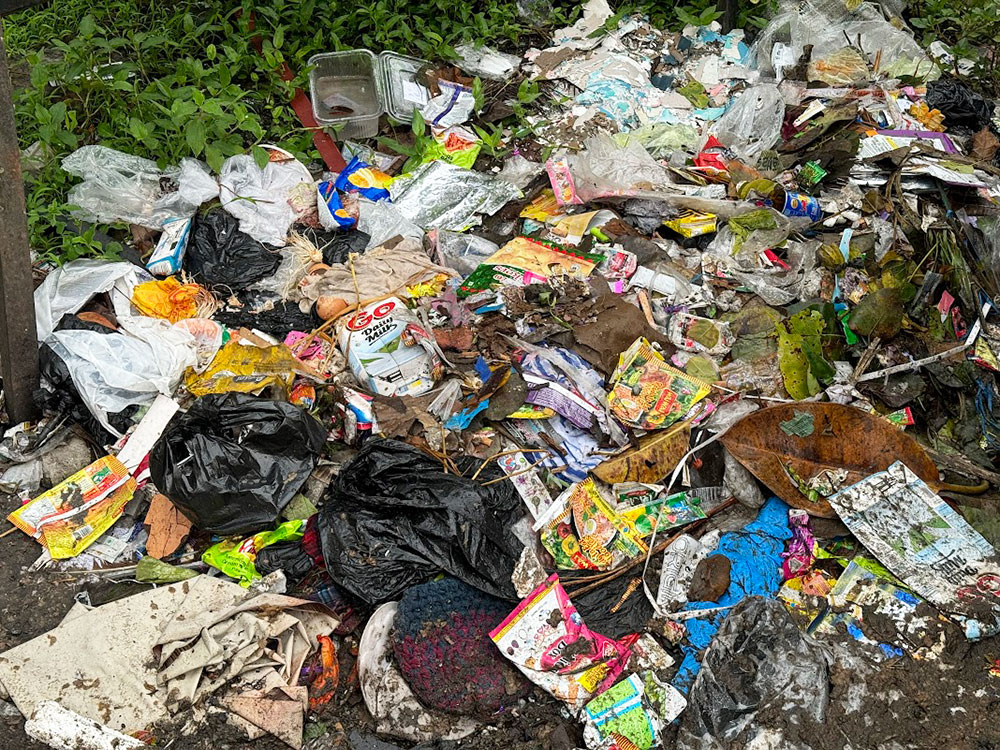Yangyel Lhaden
Nearly half of Bhutan’s waste consists of food scraps, a staggering statistic that highlights a critical environmental challenge. With inadequate management of this wet waste, a significant portion ends up in landfills, exacerbating environmental degradation.
Thimphu, the capital, is the leading producer of waste—both dry and wet—yet discussions surrounding waste reduction frequently prioritise plastic over this pressing issue, overlooking the urgent need for comprehensive strategies to address food waste and its far-reaching impacts.
According to a recent waste survey by Recykal and Ugen Trading House, households in Thimphu generate about 400kg waste each day, with a staggering 223.89kg—over half—comprising food waste.
Plastic waste follows, representing 14.6 percent or 59.524kg, which constitutes about a quarter of the wet waste produced.
The National Waste Inventory Survey (NWIS) 2019 reveals Thimphu as Bhutan’s largest waste producer, generating around 51 metric tonnes (MT) daily from a national total of 172 MT. This equates to nearly one-third of the country’s overall waste.
Food waste makes up close to 50 percent of Bhutan’s total waste, translating to 86.08 MT daily. In urban areas, food waste accounts for about 60 percent of total waste, while in rural areas, it represents about 40 percent, as highlighted in the NWIS 2019 report.
In rural Bhutan, a common practice involves dumping food waste in agricultural fields to serve as manure. However, this method is not feasible in urban areas, where food waste is collected by Thromde trucks and deposited in landfills. This approach raises significant concerns regarding sustainable waste management.
When food waste is disposed of in landfills, it decomposes anaerobically—without oxygen—producing methane, a greenhouse gas that is 25 times more potent than carbon dioxide.
This process contributes to approximately eight percent of global emissions. Also, landfilling food waste generates toxic leachate, which can contaminate water sources, waste valuable resources like water and energy, and degrade soil quality.
The entire lifecycle of food waste—from production to disposal—also plays a role in habitat destruction and biodiversity loss.
While food waste poses severe environmental risks, plastic waste presents its own set of challenges.
Plastics can take hundreds to thousands of years to decompose, leading to long-term environmental pollution.
Microplastics have infiltrated every ecosystem, from oceans to the highest mountain ranges, entering the food chain and posing threats to wildlife and human health. The urgency to address both food and plastic waste in Bhutan is clear, as the impact on the environment and public health continues to grow.
Thimphu’s only landfill, in Memeylakha, was established in 1993 with a planned lifespan of just ten years. Remarkably, it has continued to operate for two decades beyond its intended life, with both wet and dry waste still being dumped there.
To mitigate environmental hazards, a Thimphu Thromde official indicated that measures have been taken to prevent leachate and toxic water from contaminating nearby water sources. Pipes have been installed beneath the landfill to direct harmful water to the Babesa sewage plant for treatment. Plans are also underway to compost wet waste into manure, with the thromde actively pursuing this initiative.
In the meantime, the Bhutan Waste Bank, launched in August by Greener Way, aims to tackle Thimphu’s waste management challenges by incentivising waste collectors. This initiative has made notable strides in reducing both dry and wet waste disposed of in the landfill.
Before the launch of the Bhutan Waste Bank, Thimphu Thromde collected an average of 926 tonnes of dry waste and 794 tonnes of wet waste monthly. Following the implementation of the waste bank, collection through nine drop-off centres resulted in 841 tonnes of dry waste and 786 tonnes of wet waste in July 2024.
By August, these figures further declined to 668 tonnes of dry waste and 680 tonnes of wet waste, demonstrating significant progress. Daily disposal at the landfill also decreased from 52.5 tonnes in July to 43.5 tonnes in August, representing a 17.14 percent reduction.


